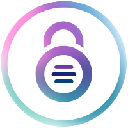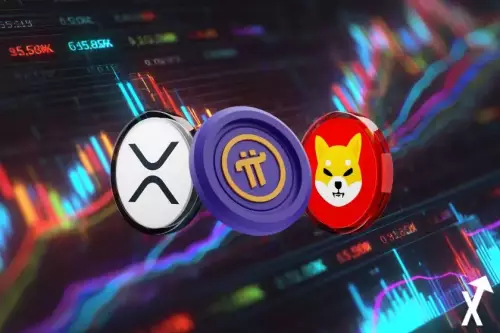 |
|
 |
|
 |
|
 |
|
 |
|
 |
|
 |
|
 |
|
 |
|
 |
|
 |
|
 |
|
 |
|
 |
|
 |
|
블록체인 데이터 인덱싱 플랫폼은 Web3 업계에서 가장 중요하지만 거의 알려지지 않은 혁신 중 하나로서 개발자의 리소스를 확보하고 분산형 애플리케이션에서 사용자 경험을 극적으로 향상시키는 데 도움이 됩니다.

Blockchain data indexing platforms are one of the most consequential, yet largely unknown innovations in the Web3 industry. These platforms help to free up developers’ resources and dramatically improve the user experience in decentralized applications (dApps). Yet the vast majority of Web3 users don’t have the first clue about what a Web3 data indexing platform is, or does, or why it’s so important.
블록체인 데이터 인덱싱 플랫폼은 Web3 업계에서 가장 중요하지만 잘 알려지지 않은 혁신 중 하나입니다. 이러한 플랫폼은 개발자의 리소스를 확보하고 분산 애플리케이션(dApp)의 사용자 경험을 획기적으로 개선하는 데 도움이 됩니다. 그러나 대다수의 Web3 사용자는 Web3 데이터 인덱싱 플랫폼이 무엇인지, 어떤 역할을 하는지, 왜 그렇게 중요한지에 대한 첫 번째 단서를 갖고 있지 않습니다.
To understand the importance of indexing, it might be helpful to think back to the early days of Web1, when the only way to find something online was to manually type the IP address of the website you want to visit into the URL bar. That changed when Google came along and indexed the web for the first time with its now-eponymous search engine
인덱싱의 중요성을 이해하려면 온라인에서 무언가를 찾는 유일한 방법은 방문하려는 웹 사이트의 IP 주소를 URL 표시줄에 수동으로 입력하는 것뿐이었던 Web1의 초기 시절을 떠올려 보는 것이 도움이 될 수 있습니다. Google이 현재의 이름을 딴 검색 엔진을 사용하여 처음으로 웹을 색인화했을 때 상황은 바뀌었습니다.
Now, indexing is going to have a similar impact in Web3 and the tangled web of blockchains that supports it.
이제 인덱싱은 Web3와 이를 지원하는 복잡한 블록체인 웹에 비슷한 영향을 미칠 것입니다.
For developers, indexing is a godsend. Imagine you’re building a dApp and you need real-time access to blockchain data, user’s interactions and smart contract events. Finding all of this information on the blockchain, which stores data in a sequential way, is an extremely painstaking task.
개발자에게 인덱싱은 신의 선물입니다. dApp을 구축 중이고 블록체인 데이터, 사용자 상호 작용 및 스마트 계약 이벤트에 대한 실시간 액세스가 필요하다고 상상해 보십시오. 데이터를 순차적으로 저장하는 블록체인에서 이 모든 정보를 찾는 것은 매우 힘든 작업입니다.
The blockchain acts as a distributed database, serving as the backend of every dApp. It provides all of the data a smart contract needs to function, but the challenge lies in accessing this information. While searching for data within a specific block or an account is fairly simple, it quickly becomes much more complicated when developers need to aggregate data from multiple queries of single blocks
블록체인은 모든 dApp의 백엔드 역할을 하는 분산 데이터베이스 역할을 합니다. 이는 스마트 계약이 작동하는 데 필요한 모든 데이터를 제공하지만, 이 정보에 액세스하는 데 문제가 있습니다. 특정 블록이나 계정 내에서 데이터를 검색하는 것은 매우 간단하지만 개발자가 단일 블록의 여러 쿼리에서 데이터를 집계해야 하는 경우 훨씬 더 복잡해집니다.
The problem is the sequential nature of blockchain, where data is stored one block at a time. As the blockchain adds more and more data, it becomes longer, leaving the data within it scattered all over the place. It’s incredibly disorganized for anyone trying to search through that data and make sense of it, and so it takes a long time to retrieve that information. Yet the most advanced dApps of today require extremely large amounts of blockchain data processing logic and often need to do this for multiple chains at once.
문제는 데이터가 한 번에 한 블록씩 저장되는 블록체인의 순차적 특성입니다. 블록체인이 점점 더 많은 데이터를 추가하면 길이가 길어지고 그 안에 있는 데이터가 여기저기에 흩어지게 됩니다. 해당 데이터를 검색하고 이해하려는 사람에게는 엄청나게 혼란스럽기 때문에 해당 정보를 검색하는 데 오랜 시간이 걸립니다. 그러나 오늘날 가장 발전된 dApp에는 엄청난 양의 블록체인 데이터 처리 로직이 필요하며 여러 체인에 대해 동시에 이 작업을 수행해야 하는 경우가 많습니다.
This is where blockchain indexers such as The Graph and SQD play such an important role, helping to streamline the way on-chain information is categorized and indexed. They can be thought of as a specialist tools for developers, and they vastly simplify the process of building dApps. Just like the index of a book, a blockchain indexer makes it quick and easy for the user – in this case a smart contract or dApps – to find the information they’re looking for. Blockchain indexers help to make the process of querying, retrieving and utilizing on-cain data more efficient.
여기에서 The Graph 및 SQD와 같은 블록체인 인덱서가 중요한 역할을 수행하여 온체인 정보가 분류되고 인덱싱되는 방식을 간소화하는 데 도움이 됩니다. 이는 개발자를 위한 전문 도구로 생각할 수 있으며 dApp 구축 프로세스를 크게 단순화합니다. 책의 색인과 마찬가지로 블록체인 색인기는 사용자(이 경우 스마트 계약 또는 dApp)가 원하는 정보를 빠르고 쉽게 찾을 수 있도록 해줍니다. 블록체인 인덱서는 온캐인 데이터를 쿼리, 검색 및 활용하는 프로세스를 보다 효율적으로 만드는 데 도움이 됩니다.
For developers, the beauty of a blockchain indexer is that they only have to define the data type and the relationships between them and specify how that information should be stored. The blockchain index will then create a customized GraphQL endpoint that presents the necessary information to their dApp. This solves all of the blockchain data retrieval and querying headaches for developers, leaving them with more time to focus on the actual functionality of their dApps – in other words, making them better.
개발자에게 있어 블록체인 인덱서의 장점은 데이터 유형과 데이터 간의 관계를 정의하고 해당 정보가 저장되는 방법만 지정하면 된다는 것입니다. 그러면 블록체인 인덱스는 dApp에 필요한 정보를 제공하는 맞춤형 GraphQL 엔드포인트를 생성합니다. 이는 개발자의 모든 블록체인 데이터 검색 및 쿼리 문제를 해결하여 dApp의 실제 기능에 집중할 수 있는 더 많은 시간을 제공합니다. 즉, dApp을 더 좋게 만드는 것입니다.
Blockchain Indexing Benefits
블록체인 인덱싱의 이점
Blockchain data indexers abstract away much of the complexity, they’re optimized for latency so they can access information in real-time, as it’s added to the blockchain, and they can retrieve historic data rapidly too.
블록체인 데이터 인덱서는 복잡성의 대부분을 추상화하고 대기 시간에 최적화되어 블록체인에 추가되는 정보에 실시간으로 액세스할 수 있으며 기록 데이터도 신속하게 검색할 수 있습니다.
The benefits for developers are myriad, helping to speed up dApp development lifecycles, increase the responsiveness of dApps, boost their reliability and provide a smooth user experience.
개발자가 얻을 수 있는 이점은 무수히 많습니다. dApp 개발 수명 주기를 가속화하고 dApp의 응답성을 높이며 안정성을 높이고 원활한 사용자 경험을 제공하는 데 도움이 됩니다.
For one thing, blockchain indexers are developer-friendly, abstracting away the complexity of coding logic that was previously required to query and retrieve blockchain data. They automate much of the process of indexing blockchain data, using templates and quickstart guides to help developers get started. Some of the newer indexers support familiar programming languages, such as TypeScript and JavaScript, meaning they’re easier for developers to get to grips with.
우선, 블록체인 인덱서는 개발자 친화적이며 이전에 블록체인 데이터를 쿼리하고 검색하는 데 필요했던 코딩 논리의 복잡성을 추상화합니다. 개발자가 시작하는 데 도움이 되는 템플릿과 빠른 시작 가이드를 사용하여 블록체인 데이터를 인덱싱하는 프로세스의 대부분을 자동화합니다. 최신 인덱서 중 일부는 TypeScript 및 JavaScript와 같은 친숙한 프로그래밍 언어를 지원하므로 개발자가 더 쉽게 이해할 수 있습니다.
Blockchain indexers support a high level of customization too, enabling developers to quickly and easily index application-specific data such as custom events from smart contract functions. At the same time, many also offer multi-chain support, meaning they provide developers with the ability to obtain and aggregate data from multiple chains and present it in a unified database table. This means dApps can quickly present unified information to users, without the developers needing to worry about using multiple APIs or subgraphs to access and manage the data from each chain.
블록체인 인덱서는 높은 수준의 사용자 정의도 지원하므로 개발자는 스마트 계약 기능의 사용자 정의 이벤트와 같은 애플리케이션별 데이터를 빠르고 쉽게 색인화할 수 있습니다. 동시에 많은 체인이 다중 체인 지원도 제공합니다. 즉, 개발자에게 다중 체인에서 데이터를 얻고 집계하여 통합 데이터베이스 테이블에 표시할 수 있는 기능을 제공합니다. 이는 개발자가 각 체인의 데이터에 액세스하고 관리하기 위해 여러 API 또는 하위 그래프를 사용하는 것에 대해 걱정할 필요 없이 dApp이 사용자에게 통합 정보를 신속하게 제공할 수 있음을 의미합니다.
The Evolution Of Blockchain Indexers
블록체인 인덱서의 진화
The very first blockchain indexer to make its mark on the Web3 industry was The Graph. As the first decentralized service of its kind, it gave developers free access to indexing capabilities, meaning they no longer had to pay a centralized service provider.
Web3 업계에서 첫 번째 블록체인 인덱서는 The Graph였습니다. 동종 최초의 분산형 서비스인 이 서비스는 개발자에게 인덱싱 기능에 대한 무료 액세스를 제공했습니다. 즉, 더 이상 중앙 집중식 서비스 제공업체에 비용을 지불할 필요가 없습니다.
The Graph was once known as the “Google of Web3”, and provided an open data marketplace powered by the GRT token that any dApp could tap into. The Graph’s network unites numerous network participants, including data consumers, indexers who query data on their behalf, and the curators who manage the subgraphs
Graph는 한때 "Web3의 Google"로 알려져 있었으며 모든 dApp이 활용할 수 있는 GRT 토큰을 기반으로 하는 개방형 데이터 마켓플레이스를 제공했습니다. The Graph의 네트워크는 데이터 소비자, 데이터를 대신하여 쿼리하는 인덱서, 하위 그래프를 관리하는 큐레이터 등 수많은 네트워크 참가자를 통합합니다.
부인 성명:info@kdj.com
제공된 정보는 거래 조언이 아닙니다. kdj.com은 이 기사에 제공된 정보를 기반으로 이루어진 투자에 대해 어떠한 책임도 지지 않습니다. 암호화폐는 변동성이 매우 높으므로 철저한 조사 후 신중하게 투자하는 것이 좋습니다!
본 웹사이트에 사용된 내용이 귀하의 저작권을 침해한다고 판단되는 경우, 즉시 당사(info@kdj.com)로 연락주시면 즉시 삭제하도록 하겠습니다.
-

-

-

-

- XRP ETF 버즈: 가격 급등이 곧 다가오고 있나요?
- 2025-11-04 17:48:41
- XRP ETF가 추진력을 얻고 있지만 규제 장애물과 시장 역학이 가격 급등을 촉진할까요?
-

-

-

-

-
























![비트코인캐시 가격 예측 [BCH 암호화폐 가격 분석] 비트코인캐시 가격 예측 [BCH 암호화폐 가격 분석]](/uploads/2025/11/04/cryptocurrencies-news/articles/bitcoin-cash-price-prediction-bch-crypto-price-analysis/image-1_500_280.webp)





































